9 Things to Consider When Designing a Warehouse Pallet Racking System
When preparing for a pallet racking design consultation, there are a number of different things to consider that will help you be better prepared, educated, and confident during the process.
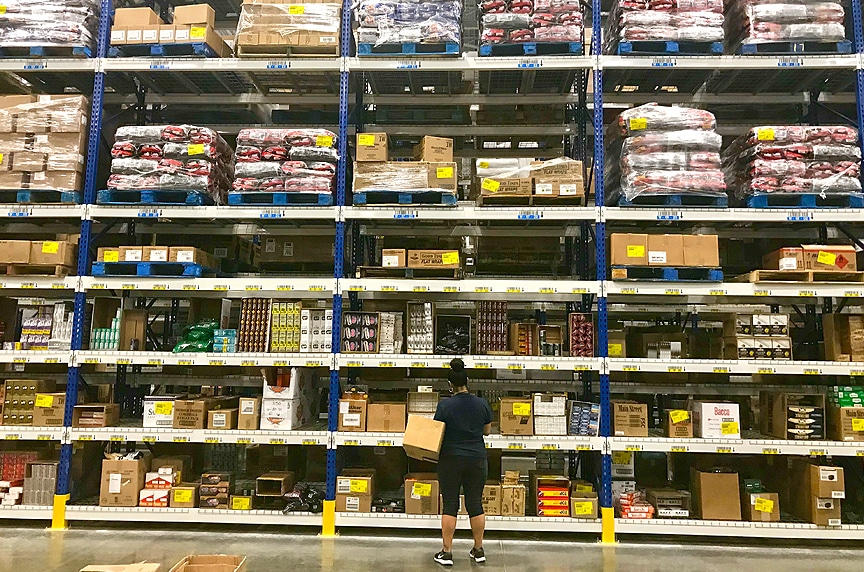
Have you been tasked with designing a warehouse pallet racking system for your facility and don’t know where to start? Are you moving into a new building and need help designing a warehouse storage solution?
In our extensive experience consulting with customers from all different industries, we find that clients will often spend time attempting to design their pallet racking system prior to meeting with us. While it never hurts to come into a meeting with extra information, we find that utilizing a team of experts from the beginning will help to save you and your company valuable time while ensuring you get the best solution to fit your warehouse.
Not only can we quickly provide a pallet racking design for your facility, we have the necessary resources to make sure our design is correctly engineered and abides by industry standards and regulations. Knowing how each of these considerations apply to your facility will help you to be prepared, educated, and confident going into your first pallet racking system design consultation.
9 Things to Consider When Designing a Warehouse Pallet Racking System
Keep reading for 9 things you need to understand about your warehouse’s workflow, capabilities, and limitations when designing a new pallet racking system.
1. Pallet Size and Type
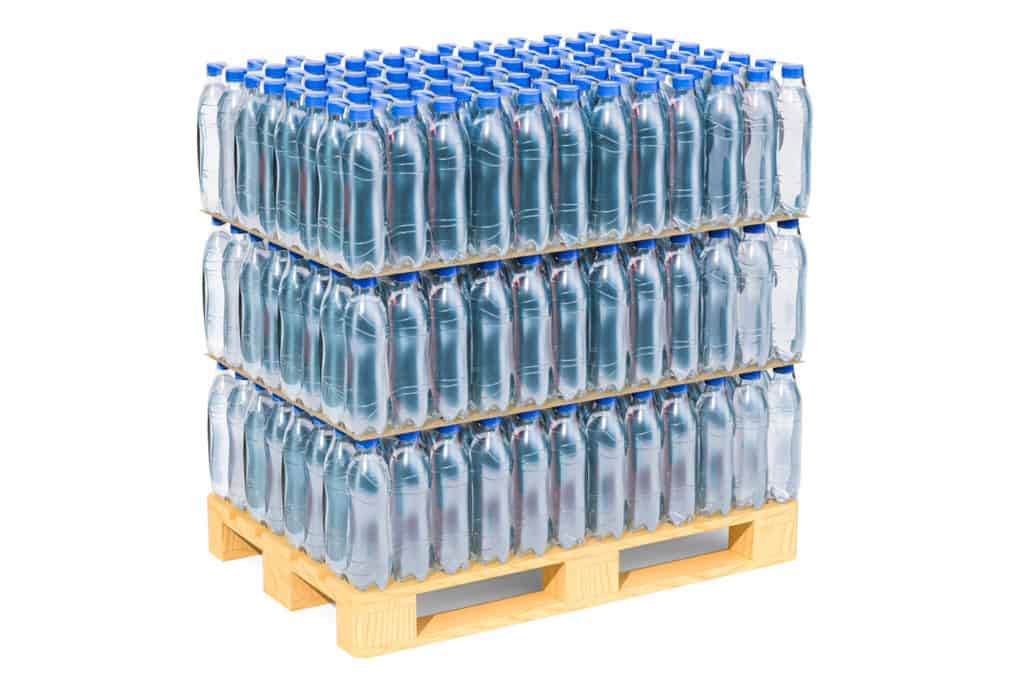
Pallet weight and dimensions (length, height, width) are essential measurements to be aware of when designing the layout of a pallet racking system. The industry standard pallet size (40” x 48”) is a universal fit for the majority of systems. Pallet size information will help to determine system dimensions such as rack depth or upright height.
The type of palletized items may influence the type of pallet racking system needed if the items:
- Require specific environmental conditions
- Are fragile and cannot be stacked
- Are date-sensitive / have expiration dates
2. Order of Inventory Retrieval: LIFO vs. FIFO
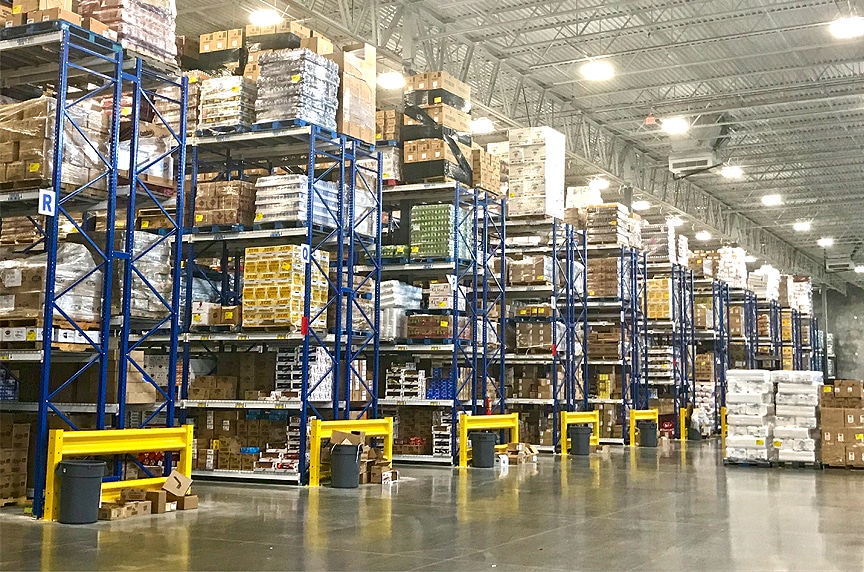
Whether your system requires LIFO (last-in-first out) or FIFO (first-in-first-out) inventory retrieval is critical to determining the type of warehouse and pallet rack solutions needed. If your products are date-sensitive, you will likely require a system that allows for products that have been in stock the longest to be shipped first – FIFO. If the shelf life of your products is not date-sensitive, a LIFO system can be applied to optimize warehouse space.
| Order of Inventory Retrieval | ||
| Type of Pallet Racking System | LIFO | FIFO |
| Selective | x | |
| Drive-in | x | |
| Push back | x | |
| Pallet Flow | x | |
|
|
Order of Inventory Retrieval |
|
|
Type of Pallet
Racking System |
LIFO |
FIFO |
|
Selective |
|
x |
|
Drive-in |
x |
|
|
Push back |
x |
|
|
Pallet Flow |
|
x |
3. SKU / Pallet Count
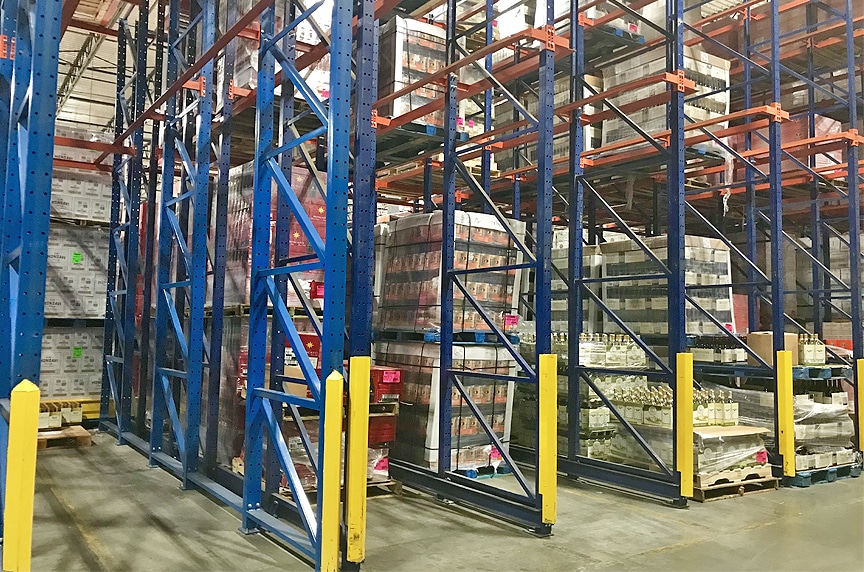
The number of SKUs and the number of pallets per SKU in a facility play a large part in determining the type of pallet racking system you may need. Facilities where there is only one pallet per SKU can utilize selective pallet racking, as it allows for variability in SKUs while leaving them readily accessible.
Facilities that have several pallets per SKU may want to utilize a higher-density storage system, such as drive-in or push back pallet racking. Facilities with a high number of pallets per SKU that also require FIFO inventory retrieval may consider investing in a pallet flow racking system.
4. Warehouse Environment
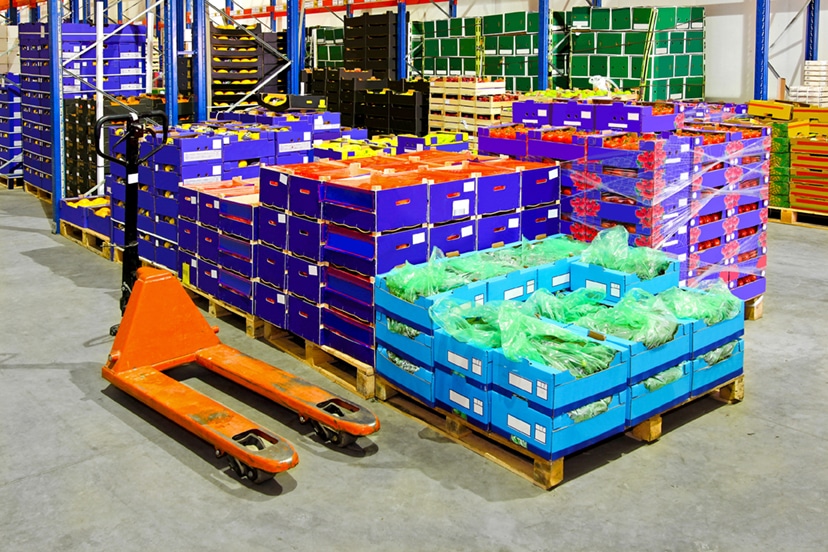
The pricing of your racking system will fluctuate depending on the type of environment your products require. Products can be stored in a variety of different environments, including:
- Cold (freezer or cooler) temperature
- Controlled temperature
- Ambient temperature (products do not require a particular temperature)
Ambient environments are where warehouse temperature is not a critical factor in maintaining product integrity. Cold warehouse environments typically store food or other perishable items at a low temperature, while controlled temperature warehouses often store items such as medications, cigars, etc. where the temperature is kept within an acceptable range for maintaining product integrity.
Unsurprisingly, environments where temperature is not critical will have less associated costs. Typically, pallet racking systems in a cold environment have the most additional cost because they require:
- Lengthy installation – workers cannot be in a freezer for long periods of time
- Strategic set up – because refrigerator / freezer storage space costs more, strategic planning is necessary to ensure storage space is optimized
- Food grade conditions – since cold warehousing environments typically store food items, there are other requirements necessary for FDA compliance. For example, pallets containing food items must be stored at least 12 inches off the ground.
5. Building Structure
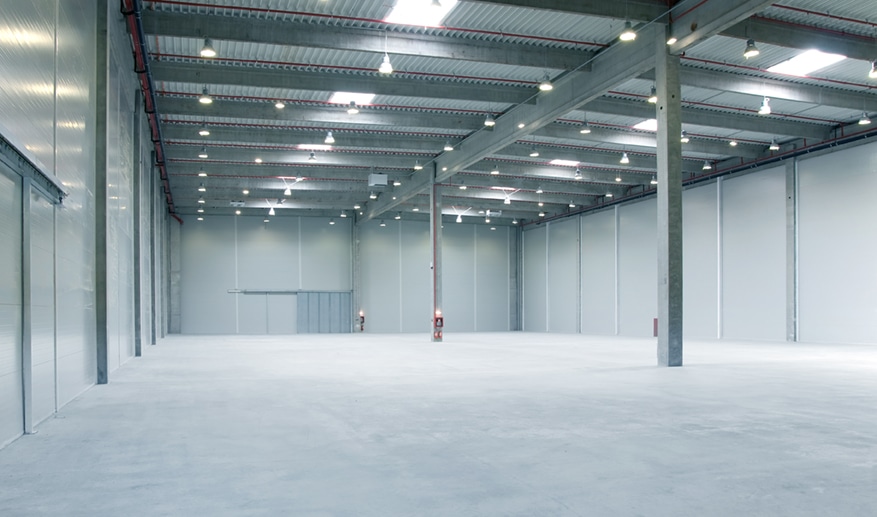
Whether a pallet racking system is designed as a retrofit to an existing building or installed into a newly constructed building may affect the project budget, timeline, available warehouse space, and more. Other important considerations regarding the structure of the building include:
- Column spacing – you need to be aware of where your buildings’ support columns are and their spacing from one another in order to “bury” them in the space between back-to-back rows of racking
- Interior ceiling height – this will tell us how tall your uprights and beam levels can be
- Size and location of dock doors
- Available warehouse space
6. Product Flow / Accessibility Requirements
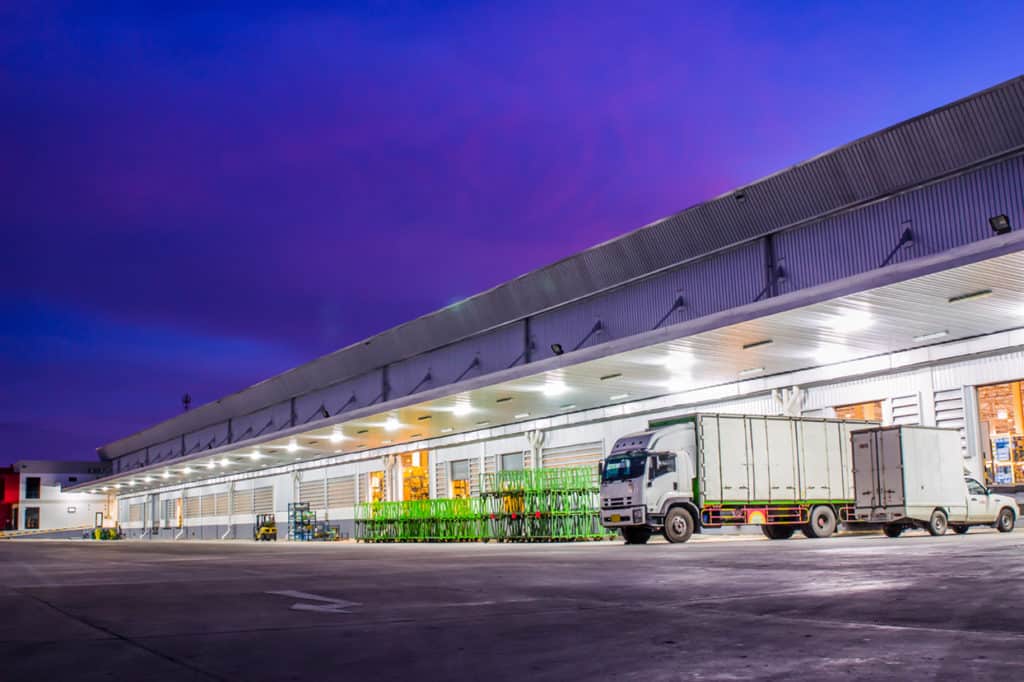
In every warehouse, there are both slow-moving products and fast-moving products. It’s important to know which of your products have a quicker turnaround time and need to be accessed more frequently. Understanding how this can affect your system’s design will help to optimize retrieval time, particularly for products with a quick turnaround time.
Product flow and accessibility information can also help decide which SKUs to store closer to the shipping and receiving areas and whether you may need high-density storage for certain SKUs and more accessible storage for others.
If your facility frequently has large orders with a near immediate turnaround time, it is a good idea to set up a staging area near the shipping doors for temporary storage of those materials.
7. Material Handling Equipment in Your Facility
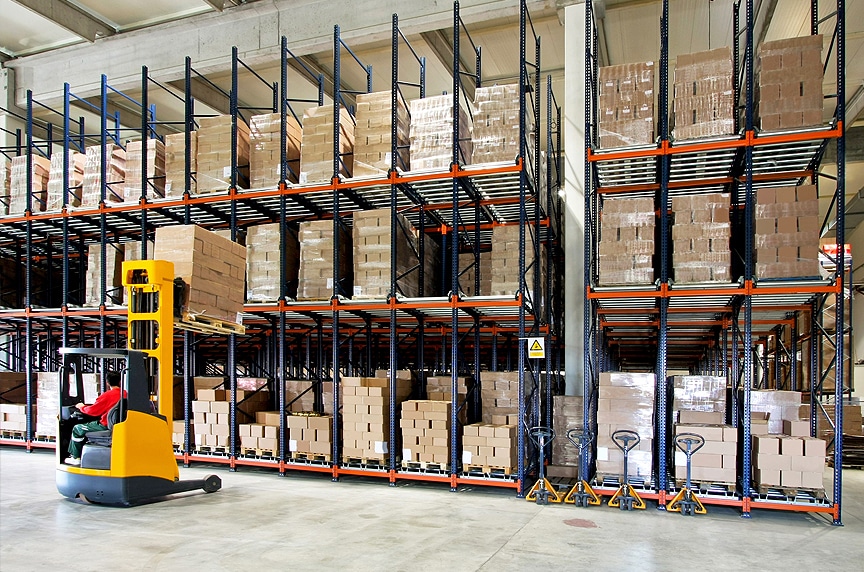
The type of material handling equipment (forklift, lift truck, or man-up order picker) used to retrieve pallets in your facility and its size is pertinent to determining aisle width and the number of racking rows that will fit into a warehouse.
For example, a standard counterbalance forklift would require an industry standard 12-foot aisle, whereas man-up order pickers can navigate through much narrower aisles. Designing a warehouse with the aisles as narrow as possible is ideal, as it allows for maximum storage space.
8. Seismic Activity

Whether or not your facility is in an area with frequent/severe seismic activity can affect the type of material and support a system will require. If your facility is in an area with high seismic activity, the pallet racking system will require higher gauge steel (usually structural steel is required, as rollformed steel is weaker), wider/larger footplates, and additional anchor reinforcements.
Basically, the more seismic activity in your area, the more structural integrity your system will require to accommodate for seismic movement, which will increase the price of your racking system.
9. Understanding Your Budget and Acceptable ROI

New vs. Used Pallet Rack Systems
“What about used pallet racking systems?” This is a question we get asked a lot. While used systems can save some money upfront, they often end up costing more in the long run because:
- Their structural integrity is questionable
- A third-party structural engineer is required to review and approve the existing structures, which is a costly service
- They are not customized to fit your facility’s products, workflow, or needs
In short, it is a riskier choice to go with a used pallet racking system. By making the investment upfront for a new system, you will receive a system with the following benefits:
- Uncompromised structural integrity
- Guaranteed to pass inspection
- Customized to your facilities’ needs
The Type of Pallet Racking System
Some types of pallet racking systems have more features and capabilities than others and, therefore, cost more. The most inexpensive system with the shortest lead time is selective pallet racking. So, if your facility does not necessarily require high-density storage, selective pallet racking is probably the best bang for your buck.
But, if higher-density storage is required, you may need to utilize drive-in pallet racks, push back pallet racks, or even pallet flow racking, depending on your circumstances. The table below can help in a quick comparison between each pallet racking systems’ capabilities and pricing.
| Pallet Racking System | Price | Inventory Management | Storage Density |
| Selective | Least expensive | FIFO | One pallet per SKU |
| Drive-in | Cheaper than push back | LIFO | High-density: one SKU per bay |
| Push back | Costs more than drive-in | LIFO | High-density: one SKU per row |
| Pallet flow | Most expensive | FIFO | High-density: one SKU per row |
Utilizing a Team of Professionals
As mentioned above, utilizing a team of professionals to design your pallet racking system is the best way to ensure that your system is:
- Designed quickly and efficiently
- Engineered according to industry standards and regulations
- The best solution for your facility
Wrapping it Up
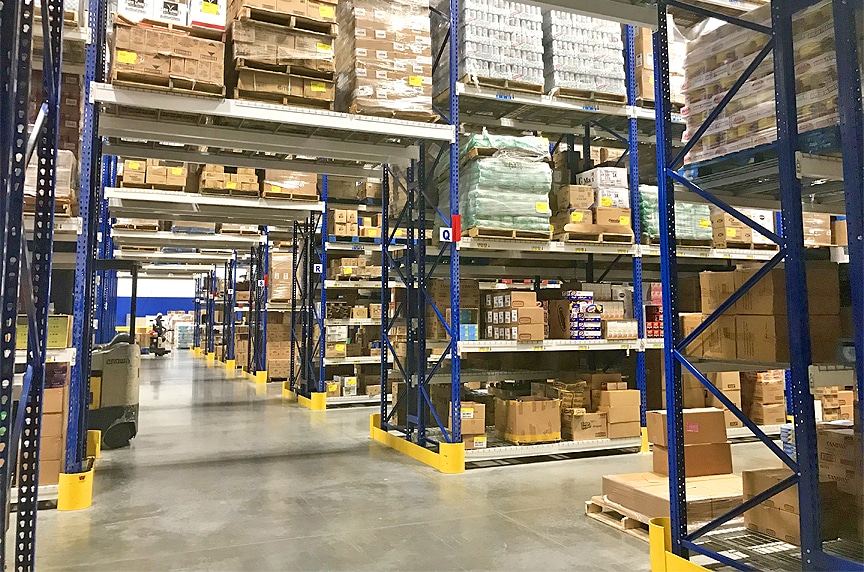
We hope that this article helped you understand your facility’s pallet racking needs and become more comfortable having an educated conversation with an expert. To recap, the nine things to consider before your pallet racking consultation are:
- Pallet size and type
- Order of inventory retrieval
- SKU/pallet count
- Warehouse environment
- Building structure considerations
- Product flow/accessibility requirements
- Material handling equipment in your facility
- Seismic activity
- Understanding your budget and acceptable ROI
Our Warehouse Solutions division is dedicated to providing complete, custom designed warehousing solutions. Our talented and experienced team consists of technicians, system installers, project engineers, project managers, and an extensive sales and support staff.
During our consultation process, our specialists will spend several days with whoever oversees your facility to ensure that we get every detail necessary for effectively designing your pallet racking system. If you are interested in learning more or want to schedule a consultation, contact us to connect with a Racking Specialist.
